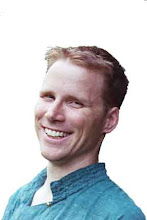9:45 a.m. – Sally Crandall, Building a National Park storytelling program
Sally will be in residence at Homestaed National Monument (HNM) in Nebraska for two weeks, beginning next Sunday. Many national parks provide an opportunity for an artist to reside in the park. Facilities vary widely, from a cabin requiring a one or more mile “pack-in” hike to a room at a lodge. In turn, the park requires something from the artist within a year of the stay. (Go to nps.gov to explore the possibilities.)
Sally will be staying at the Homestead National Monument for two weeks. During that time, she will appear at their 12th annual storytelling festival. Her goal is to create a replicable story-related product that can be used within their park. Homestead would like to have lessons specific to their location. Settlement in the area was based on the Homestead act of 1862 during which 10% of the U.S. land area was claimed and settled. Homesteaders had to be a head of household, at least 21 years old. Homesteaders included former slaves and single women. Many were newly arrived immigrants. They were allowed five years to “prove” the land, (building a dwelling and creating an income-producing farm.) HNM staff aim at serving the curriculum needs for 4-6 grades. Sally prompted discussion with the questions: “How do I approach the area, and how do I leave behind something others can do?”
Discussion followed.
• Nancy Donoval researched and provided stories of pioneer women in a previous project.
• Other topics could be prairie animals and plants, disasters such as grasshoppers and fires. Sally, having previous experience with the disaster story of the Dayton flood of 1913, might be able to find a serious natural disaster to research and write about.
• Resa suggested that the settlers might not be able to fully understand (see) what was already there on the prairie, which to them looked like a vast nothingness.
• Sally referred to one of Sherry Norfolk’s books which included ideas for a scavenger hunt including sounds, textures, smells and other sensory prompts.
• Suggestion by ? – cooperative efforts with local historical societies, museums
• Harold suggested the possibility of transportation: Prairie Schooners, the “ships” of the great plains
• Joyce referred to the wants and needs of the homesteaders. They didn’t need a road. Instead, the later settlers followed items that were discarded by earlier travelers. Strict limits were set by those guiding the westward parties, Explore what people hid in their luggage: dolls, a toy top, a poetry book). Things thrown out included a grandfather clock, a large bureau.
• Eric proposed a class full of historical characters and scenarios. Kathryn suggested that some of the characters need not be human, but could be animals.
• Sally will be taking stories of here experiences of the ocean, the NYC area, and building on those to amplify the contrasts and similarities to life on the prairie, (i.e., “a waving ocean of grass” and seasickness which occurred on the prairie as well as the ocean.)
• Resa proposed using technology and artifacts: Google Earth maps, audio and video, artifact related to specific spots.
• Fran related that Lyn Moroney did a writer’s residency in the Colorado Mountains. The director of parks in Oklahoma worked with Territory Tellers to develop stories about the Waushetau and Black Kettle battlegrounds where Custer’s troops massacred Native women and children. Tellers there tried to interview Native folks. In another residency at a park based on springs, sound-makers used interactively by students reproduced sounds found in nature. A park ranger used those soundmakers as part of a food chain program.
• Sally said that the ideal would be to create a program where there is an introductory “talk”, then students would break up into groups and “explore,” coming up with stories based on what they have found. Resa remarked on the possibility of using “guided inquiry,” such as Kevin presented, having participants find things and attach questions that lead to discussion.
• Sally noted that there is an in-residence Education Director at the park who will be able to guide her to some degree, assuring that her work product will be utilized by HNM.
11:20 a.m. – Talking Stick Circle (as time allows)
We were given time to comment on the weekend, as a “talking stick” was passed around the circle. Remarks were universally positive, with a majority feeling that they were taking away a feeling of stimulation, motivation, and useful tools to improve their programs.
12:15 -- Short Ending Ceremony
The artistic central focal point built by participants on the first day was disassembled. Each participant removed the stone they had brought from home and the objects added to the assemblage were put back where they had been found. We wished each other well and disbanded for lunch or to head home.
Lunch
Such an abundance of food had been provided during the pot-luck and by the restaurants that many of us stayed and enjoyed another friendly meal at the Wolf household before heading home.
Note: Thanks go to Kathryn who cleaned and vacuumed the floor of the yurt after our many comings and goings had inadvertently brought in dust and dirt. We hope we left it in good condition and will be invited back.
Organizing tool for the April 9th,10th and 11th 2010 Environmental Storytellers Retreat in Yellow Springs Ohio.
Monday, May 10, 2010
Subscribe to:
Post Comments (Atom)


Wow what a very relaxing and free from stress life you all have. Very nice.
ReplyDelete